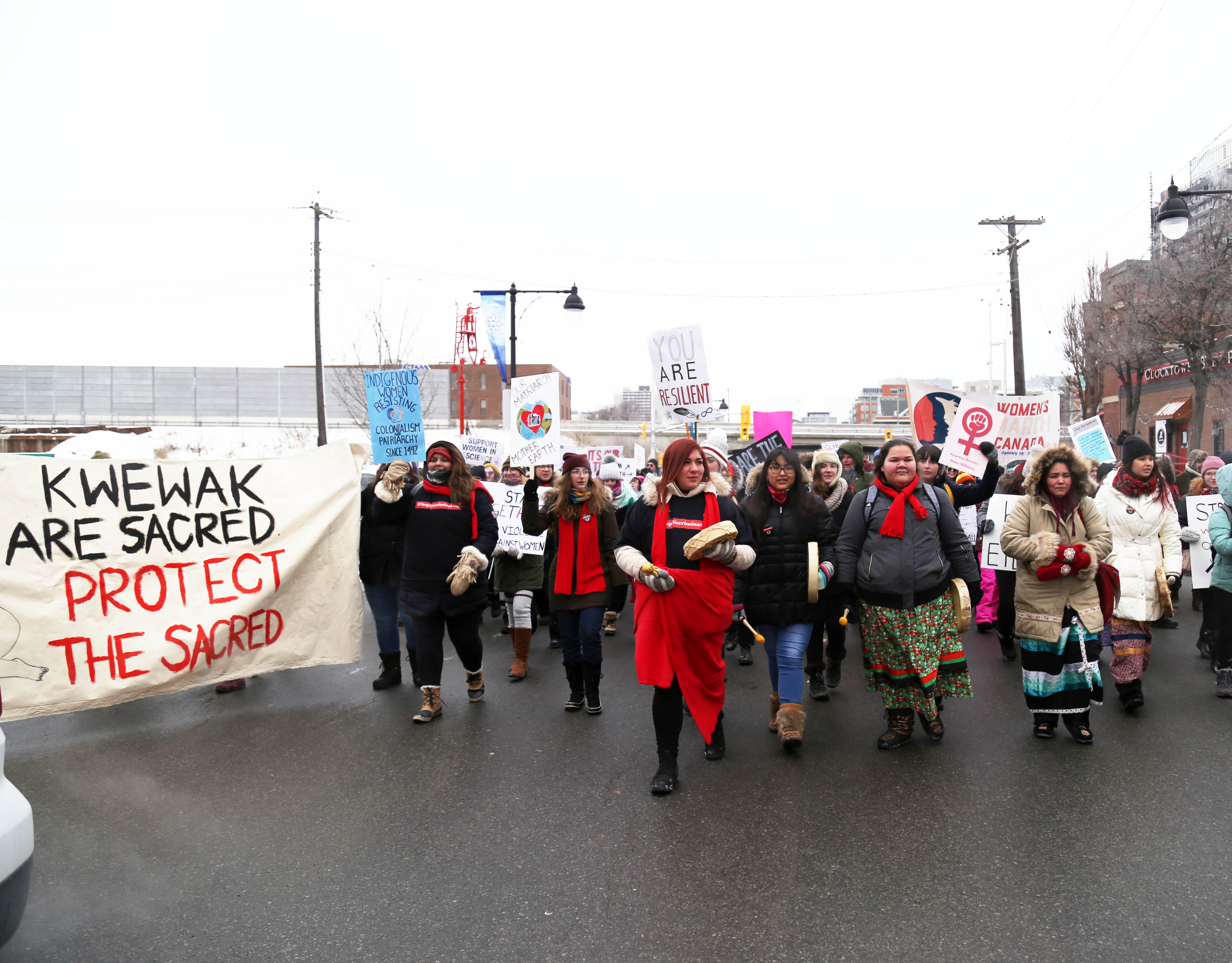Hundreds of Ottawa residents gathered in subzero temperatures at Parliament Hill on Jan. 19 for Ottawa’s third annual Women’s March.
The march began with a rally on Parliament Hill and ended at Lansdowne Park.
This year, the Women’s March Ottawa chapter worked with the Native Women’s Association of Canada to amplify the voices of Indigenous people.
“[This Women’s March] was an opportunity for us in Ottawa . . . to use our platform to remind Canadians that our Indigenous sisters experience violence at much higher rates than many other women,” Catherine Butler, chair of the Women’s March Canada board of directors, said.
She said that this year was successful, and the Women’s March Canada will continue to make the event more inclusive and intersectional.
“The Women’s March does not have the best image in [people of colour] circles, especially Black ones,” Celestina Nicole, an organizer for this year’s march, said. “My role in organizing the Women’s March was mostly recruitment, looking for [people of colour] who want to get involved [in the march],” she said.
“The Women’s March is seen as the white Women’s March and I wanted to be a part of change,” Nicole said.
Nicole added that the march in Ottawa has been criticized for excluding marginalized groups and centering feminism on white cis-gender women.
“There is a lot of non-inclusive feminism that exists. Women’s March should not aim to please them,” Nicole said. “[It] can be more inclusive by recruiting more diverse members from the community they serve. Once these members are recruited, they should be heard, and they should be treated as active members with lots to contribute,” she said.
Shaylin Allison, a second-year humanities student at Carleton University, said that she did not attend the march this year because she felt that her identity was excluded at the one in 2018.
Allison said she attended the march in Ottawa in 2018 and found that it was not as intersectional as she had hoped.
“As an Indigenous queer person, I felt a little excluded or out of place,” Allison said.
“The event is important in a lot of ways, but we need to do better to be more inclusive of individuals of colour and out of the binary,” she said. “We need to acknowledge that we are marching on stolen land, no matter who we are we’re still occupying this unceded territory.”
“This will be a movement for all women in this country, and until every single Canadian woman sees herself reflected in the work and accomplishments of the Women’s March movement in every community, we will continue to strive to make it so,” Butler said.
Photo by Jasmine Foong






